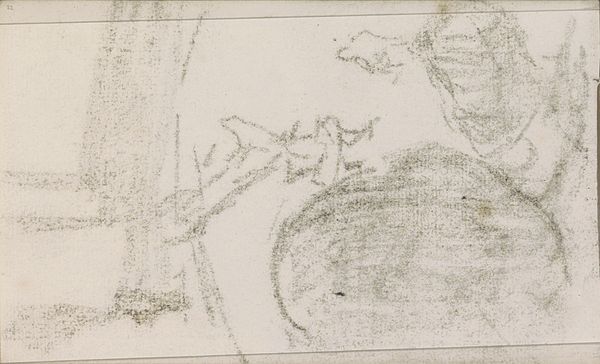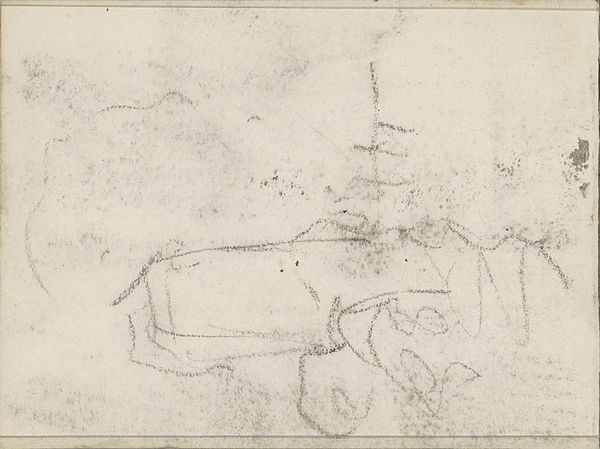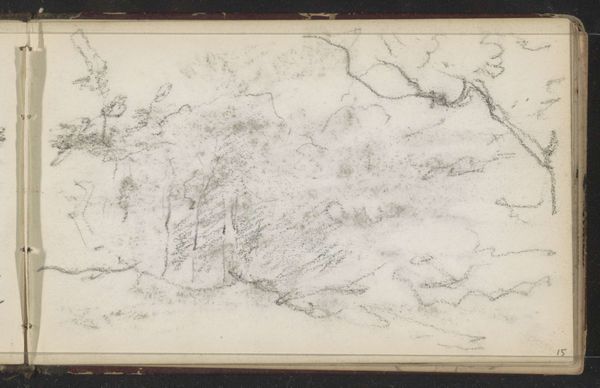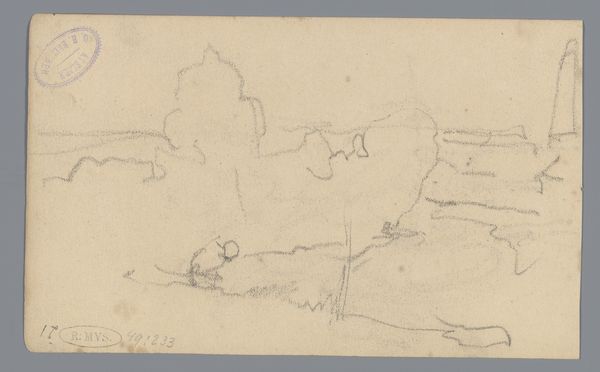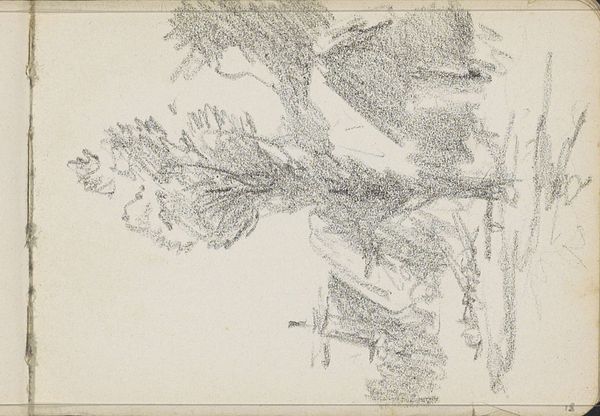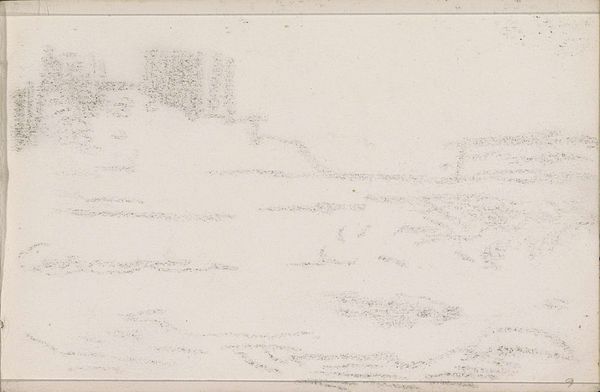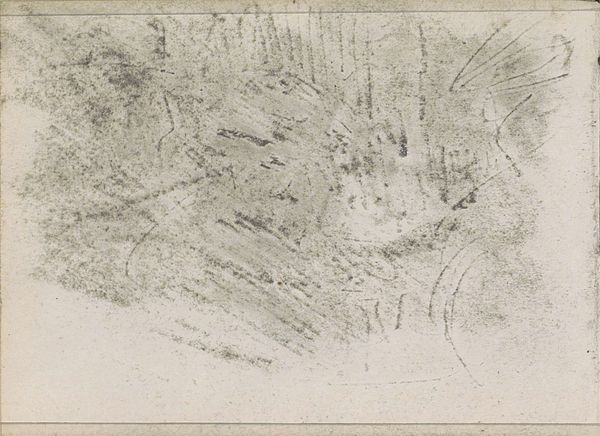
Copyright: Rijks Museum: Open Domain
Curator: Here in Gallery 14 we see Isaac Israels's graphite and pencil drawing, titled "Abklatsch van de krijttekening op pagina 15," dating between 1875 and 1934. It resides as part of the collection of the Rijksmuseum. Editor: My initial impression is one of ephemeral sketchiness, like a fleeting thought captured on paper. The composition feels dynamic despite the limited range of tonal values. Curator: Absolutely. Note the delicate yet assured lines. While the impressionistic style focuses on capturing a momentary visual impression, landscape scenes like this often hold deep cultural significance. Landscapes frequently reflect a culture's relationship with the natural world, sometimes carrying spiritual connotations relating to nationhood. Editor: And the artist uses graphite to superb effect, creating an incredibly varied range of visual densities with so little apparent effort. The interplay of light and shadow across the page seems particularly engaging given that restricted tonal scale. It's all line, and tone emerges entirely through that linework, wouldn’t you agree? Curator: Yes, look at how Israels hints at volume through careful hatching and cross-hatching. Also consider that sketches served not just as preliminary studies for larger works but often functioned as mementos, travel souvenirs or documents of transient events for personal reflection, building associations through the depicted landscape. The sketch thus became a form of mnemonic technology. Editor: I hadn't considered that, it adds an extra layer of interpretive possibilities. As a pure matter of composition, I am finding it impossible to stop observing the balance between density on the left versus lightness and negative space on the right; the composition directs the eye across the entirety of its field so efficiently. Curator: And each mark is made by the artist carrying cultural experience and their mark carries cultural memory forward for us to encounter. It reveals both artistic tradition and immediate experience. Editor: Indeed, encountering this drawing has deepened my appreciation for how powerfully a restricted palette can speak. Curator: For me, I walk away with a heightened sense of the landscapes in memory that formed the experience and the art in the period and a renewed curiosity about the function and meaning invested into each such act of drawing.
Comments
No comments
Be the first to comment and join the conversation on the ultimate creative platform.
